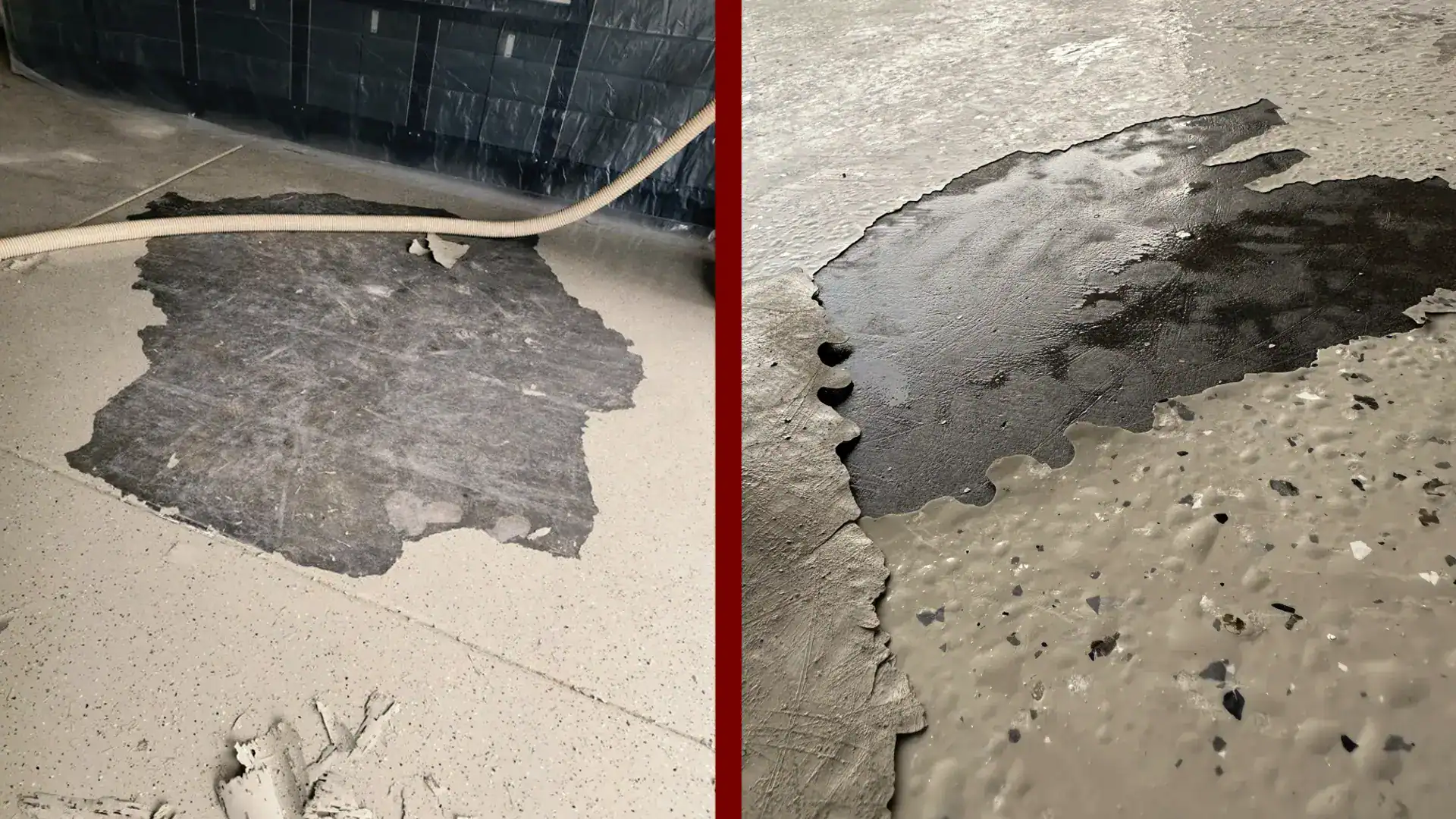Garage floor paint seems like an attractive option at first. Whether you’re considering a DIY kit from a home improvement store or a 1-day system advertised as a fast professional install, the pitch is always the same: quick results at a lower cost. But what many homeowners discover is that these shortcuts don’t hold up when faced with real-life conditions—vehicles, hot tires, spills, tools, and daily wear.
The truth is, high-traffic garages demand more than a thin layer of paint. Here’s why DIY and 1-day garage floor coating systems disappoint—and what to do instead if you want a floor that actually lasts.
The DIY Garage Floor Paint Problem
DIY kits promise convenience: sweep the garage, apply a chemical etch, and roll on paint. The problem? This level of surface prep isn’t enough for lasting adhesion. Professional installers use industrial diamond grinding to create a precise surface profile so coatings chemically and mechanically bond to concrete. Without it, paint sits loosely on the slab, peeling and flaking in a matter of months.
Another issue with DIY products is thickness. These paints are typically thin, designed more for aesthetics than durability. When exposed to hot tires, heavy equipment, or simple abrasions from foot traffic and storage, the coating quickly breaks down. Instead of a long-term upgrade, homeowners end up with a patchy, worn-out floor that often looks worse than bare concrete.
The Weakness of 1-Day Installs
1-day garage floor coating systems appear more professional, but their speed relies on cutting corners. Most skip a critical step: a true moisture-mitigating epoxy primer. Moisture vapor moves naturally through concrete slabs, especially in climates with seasonal humidity changes. Without a proper barrier, that vapor pushes coatings up, causing bubbling, blistering, and delamination.
The quick-cure products used in 1-day systems are also thinner and less resilient. They may look good for a short time, but moisture and high-traffic conditions expose their weaknesses fast. Hot tire transfer—when heat from your tires softens the coating—remains a constant problem. Once peeling begins, the surface deteriorates rapidly.
Why Full Flake Epoxy/Polyaspartic Coatings Work
When it comes to garage floor paint, not all systems are created equal. If you want a garage floor that actually lasts, there’s one clear winner: full flake, 100%-solids hybrid epoxy and polyaspartic coatings.
At GarageFloorCoating.com, we use a proven 2-day process. It begins with diamond grinding to prepare the surface, followed by a moisture-mitigating epoxy primer to lock in adhesion and keep moisture out. Next, a full decorative flake layer adds texture, strength, and style. Finally, we apply dual UV-stable, 100%-solids polyaspartic topcoats engineered to resist hot tire transfer, abrasions, spills, and discoloration from sunlight.
This system doesn’t just look good—it’s built to perform under real-world conditions. With a lifetime warranty against delamination, it delivers both peace of mind and long-term value.
Quality Takes Time
It’s tempting to choose the fastest or cheapest option, but when it comes to your garage floor, quality takes time. The difference between a floor that fails within a year and one that lasts decades comes down to careful preparation, the right materials, and a process designed around durability.
The Bottom Line for Homeowners
DIY garage floor paint kits and 1-day coatings promise quick results, but the reality is they can’t withstand everyday use. Peeling, hot tire transfer, bubbling, and staining are almost guaranteed. The only proven alternative is a 2-day full flake epoxy/polyaspartic system that addresses every weakness—moisture, heat, abrasion, and UV exposure.
If you’re ready to invest in a floor that stays beautiful and strong for decades, trust the experts at GarageFloorCoating.com.
Contact us today for your free estimate and discover the difference a true 2-day system makes.
About the Author
Share this Post



